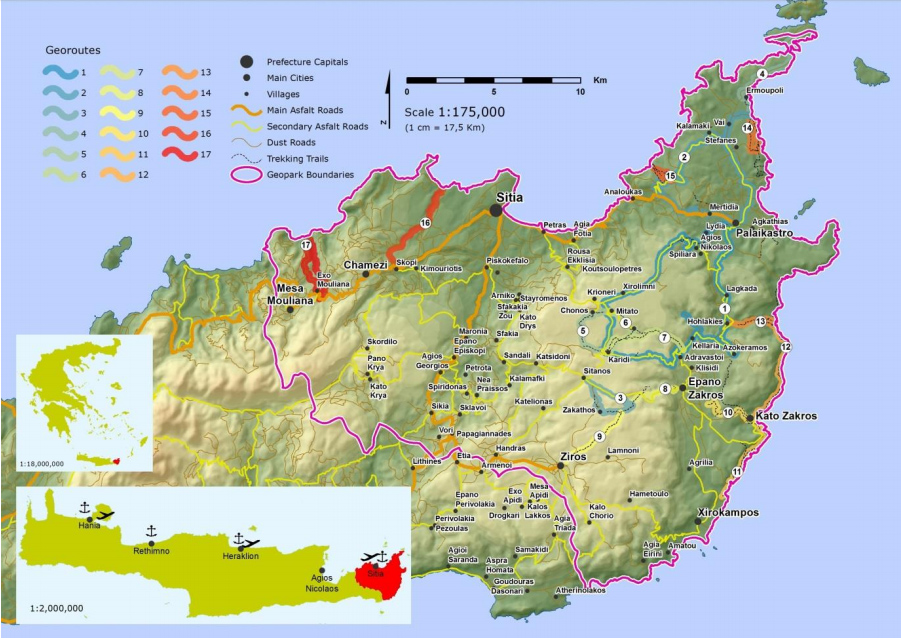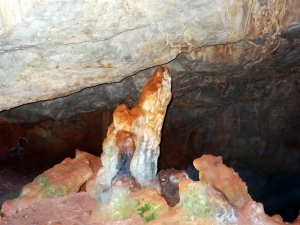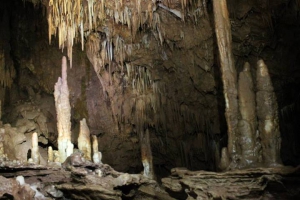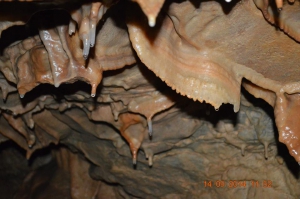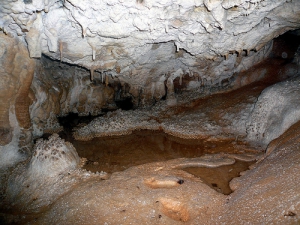The cave of Pelekita is located at an altitude of 100m, at the foot of Traostalos Mount, well hidden within the bare rocks of the wild landscape of Zakros. The entrance of the cave is located 5 km northeast of Kato Zakros, in the position Pelekita or Sikia. To reach the cave, the visitor has either to walk one hour from Kato Zakros or one quarter by coming from the sea.
The Cave Fovolies is located north of Atherinolakos at position Fovolies. It is located next a a Minoan settlement. It is a small cave and easily accessible.
The Cave Dadoulas or Maxime is an underground river at Dadoulas area by Vrysidi settlement. It has a total routes’ length of 760m, depth of 260m and ends at a siphon (well). It has very rich decor and is characterized as a "living museum of the geological history” of the region.
At position Patelia, about 1 km NW of Sitanos we meet the large cave of Oxo Latsidi, formed in Jurassic limestone. It was originally accessible for 50m. It was later studied by Paul Faure and mapped by Eleftherios Platakis and Ioannis Tsifetakis, who found a long tunnel 360m long. After the entrance we meet a room (34m x 16m) and a chamber on the right (32m). On the left, for 330m extends the tunnel with a width of 2-8 m and a height from 0.5m-1.5m. Recent surveys give the cave a longer length of up to 1.000 m. The different flows of water give the impression that it was once an underground riverbed. Generally the decoration is poor.
The cave Chonos Sitanos is a sinkhole near Sitanos where there are many caves. The total length of the routes in the cave is 400m and the maximum depth is 94m.










